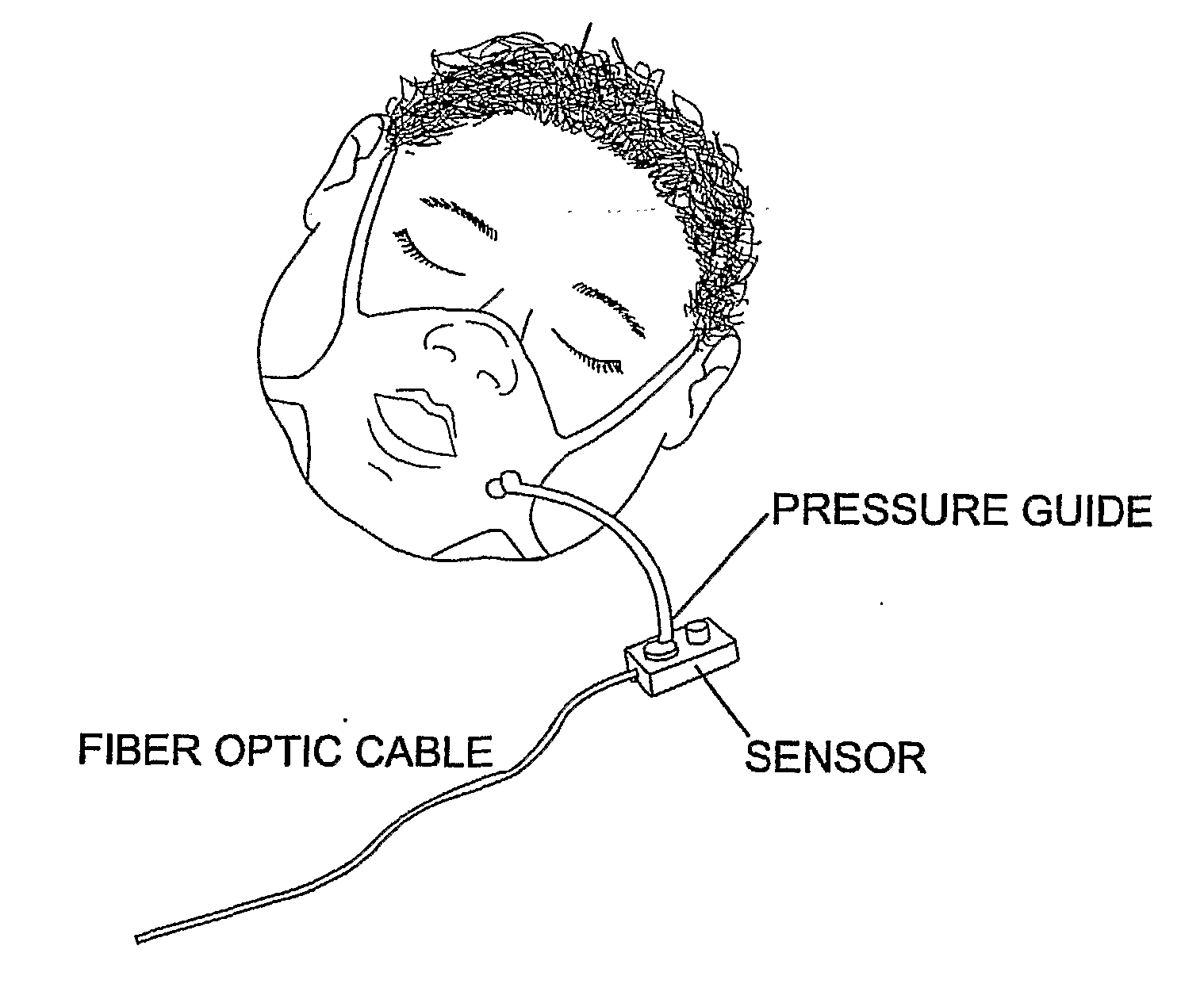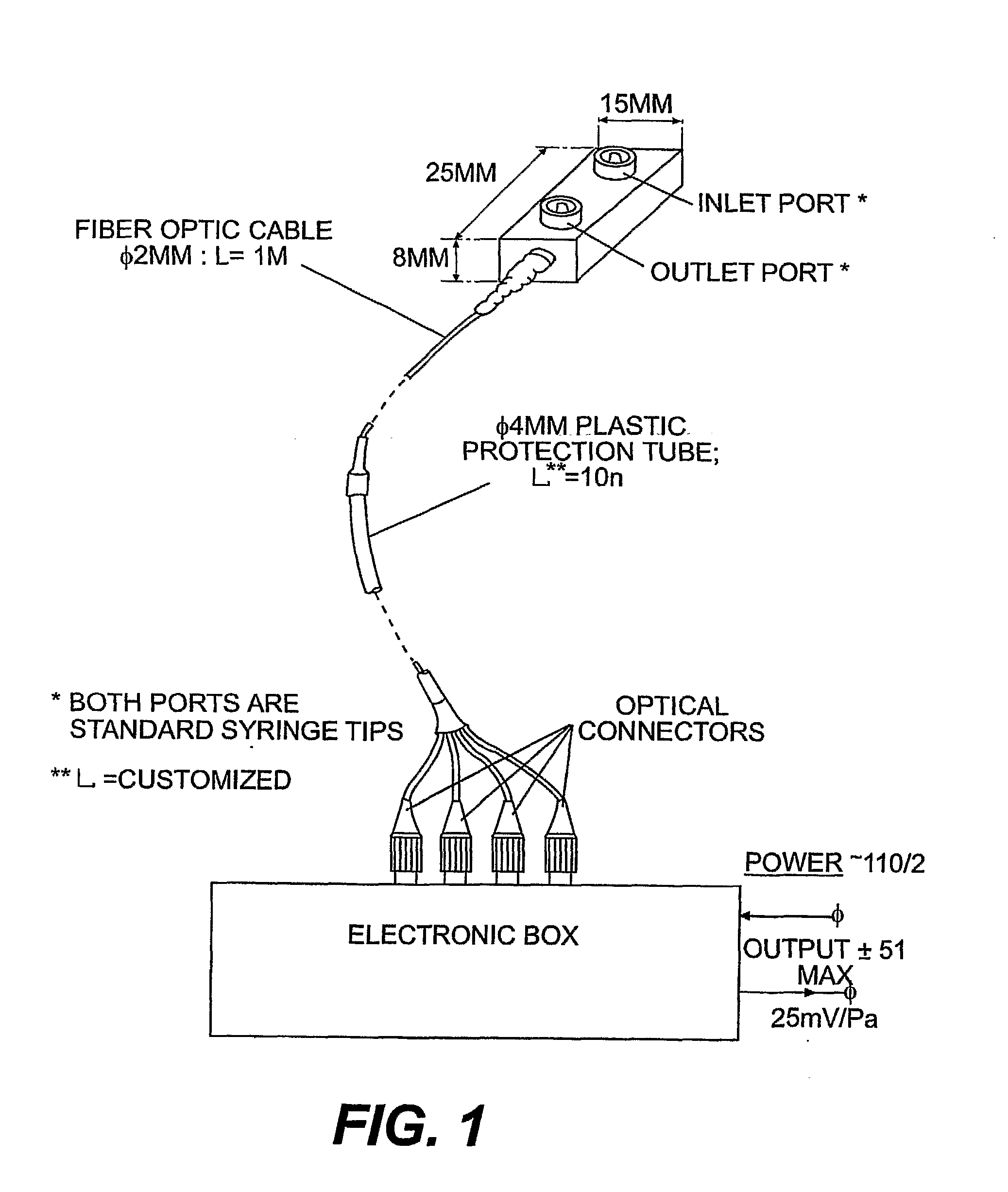Respiratory Volume/Flow Gating, Monitoring, and Spirometry System for Mri
a spirometry system and spirometry technology, applied in the field of medical imaging, diagnostics, therapy and intervention, can solve the problems of incompatibility of conventional methods of air flow measurement with the magnetic field environment of mr systems, inability to accurately track the volume changes in the lungs, and many limitations, and achieve the effect of high precision and accuracy
- Summary
- Abstract
- Description
- Claims
- Application Information
AI Technical Summary
Benefits of technology
Problems solved by technology
Method used
Image
Examples
Embodiment Construction
[0020] In accordance with an example of the preferred embodiments, a patient in an MRI scanner wears a mask preferably covering the nose and mouth, and held on the face with straps. The mask is preferably a tightly fitted low profile plastic mask or other modified mask in communication with a pneumotach assembly, including a pressure sense chamber and an air pressure sensor. A port on the mask allows the patient to inhale and exhale room air or other gas mixtures as required. While not being limited to a particular theory, the port is fitted with the pressure sense chamber. The pressure sense chamber includes a laminarizing element, a resistive element and a conduit communicating with the air pressure sensor. The proximal end of the pressure sense chamber includes a laminarizing element having a baffle. The baffle serves to limit turbulence and flow eddies in the pressure sense chamber. The distal end of the pressure sense chamber includes a non-metallic, hydrophobic, porous screen ...
PUM
 Login to View More
Login to View More Abstract
Description
Claims
Application Information
 Login to View More
Login to View More - R&D
- Intellectual Property
- Life Sciences
- Materials
- Tech Scout
- Unparalleled Data Quality
- Higher Quality Content
- 60% Fewer Hallucinations
Browse by: Latest US Patents, China's latest patents, Technical Efficacy Thesaurus, Application Domain, Technology Topic, Popular Technical Reports.
© 2025 PatSnap. All rights reserved.Legal|Privacy policy|Modern Slavery Act Transparency Statement|Sitemap|About US| Contact US: help@patsnap.com



